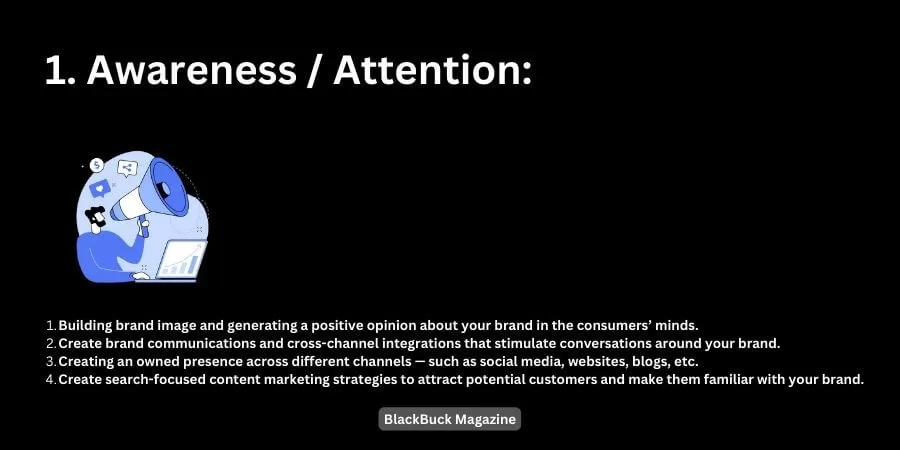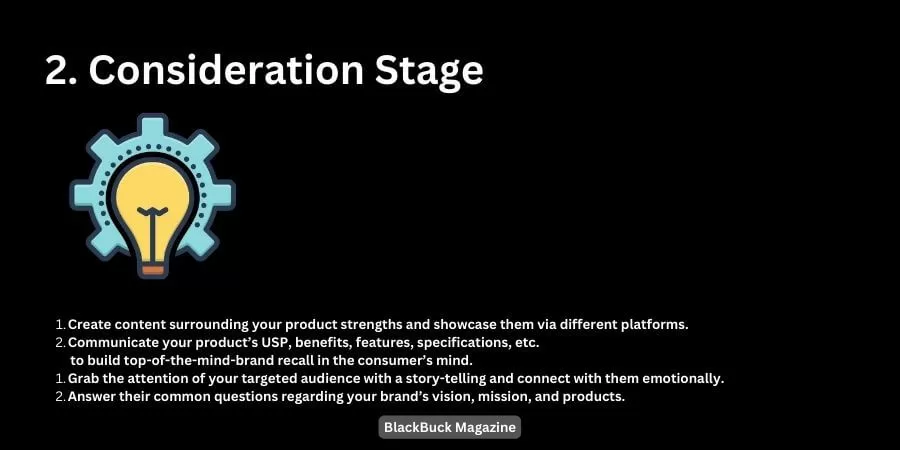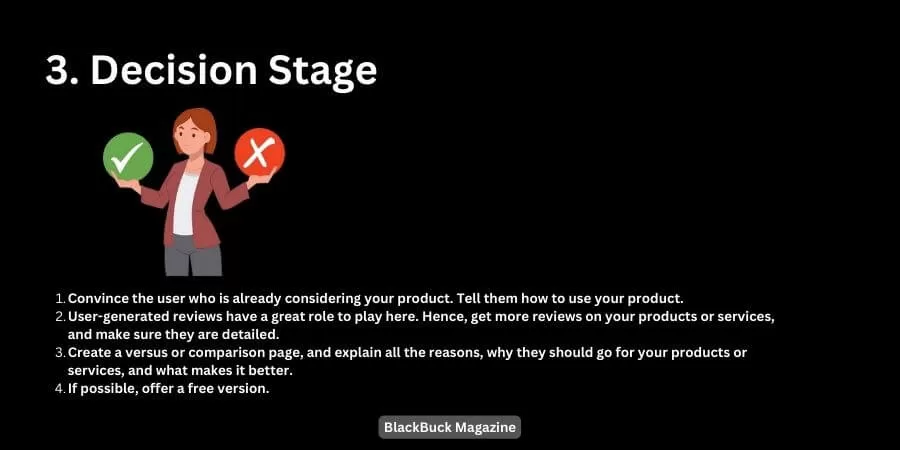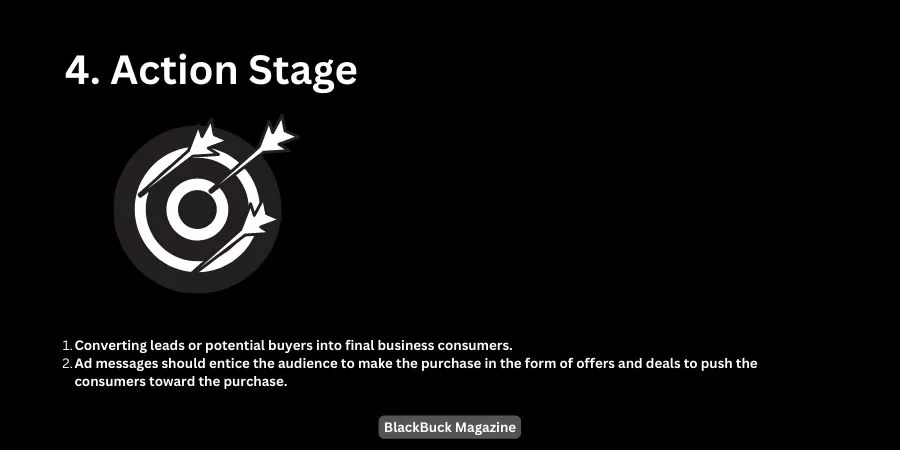It is very important for a business to know a roadmap their customers take to reach them. You can even create a roadmap for your potential customers to reach you. Confused? This is what a marketing funnel is!
You might have read about the funnel at some marketing analytics learning. Let’s understand what exactly it is! There are many terms related to funnel which include, sales funnel, conversion funnel, webinar funnels, email funnels, and others.
Let us be honest with you, the ideation behind each funnel is the same, just their end product is different. In this article, we will be studying what a marketing funnel is, why you should use it, and how it works.
Table of Contents
- What is a marketing funnel?
- What are marketing funnel stages?
- What is the 5th stage of the marketing funnel?
- Importance of Marketing Funnel For Businesses
- How to create a marketing funnel?
- How to measure the marketing funnel?
- The Difference Between B2C and B2B Marketing Funnel
- Create a result-driven marketing funnel!
What is a marketing funnel?
Any funnel describes a customer’s journey with you. And so does the marketing funnel!
A marketing funnel visualizes the roadmap of your customer with your brand, from the moment it visits your website. We all know what an actual funnel is – a tube that is wide at the top and narrow at the bottom.
The widest part of the funnel indicates the large group of people who knows about your brand or has visited your website or social media account. As we move towards the bottom, the pipe gets narrower, where the journey of a potential customer ends as a customer of ours.
Now, the question is how that happens. With the help of a proper marketing strategy. To build a marketing strategy that will align with your marketing funnel, you need to understand the different stages of the funnel.
What are marketing funnel stages?
There are four main stages a customer goes through during their journey interacting with our brand or a business, which is known as a marketing funnel. These four stages of the marketing funnel are:

1. Awareness / Attention:
This is a stage where your potential customer first learns about your brand or business. The medium of knowing you can be anything, from ads to find your website through a search for content.
2. Consideration / Interest
At the interest stage, they will learn that you have a solution to their problem. Then, they will express their interest via various activities. Those activities include following you on a social media platform, visiting your website repeatedly, and others.
3. Desire / Decision
After the Interest stage, the Desire or decision stage comes. Here, your customer knows that you provide solutions, but to make the final decision, they will read reviews, talk to friends, evaluate alternatives, compare, and much more. After all this, they will make the final decision which takes us to our last stage.
4. Conversion / Action
The last stage in the marketing funnel is the action or you can say conversion. Here, your visitor will convert into your customer, i.e., buy your products or services.
Reading the stages makes it look easy and a piece of cake. However, the effort you have to put in to get the results is far from what you can see or imagine. As the sales, marketing, and way the customers behave after purchasing the product are evolving there’s one more added stage at the bottom of the funnel.
What is it?? – Delight or Advocacy
What is the 5th stage of the marketing funnel?
The 5th stage of the marketing funnel is advocacy or delight. This is just like the after-sale services, you can call it after-purchase feelings. It is important to ensure that customers are fully satisfied with the product or services bought. Why? This way he won’t only be your customer but also the advocate. He will suggest your product and services to his friend’s group, family member, or one looking for it.
This way you will get the lowest drop-offs at the 3rd stage of the marketing funnel.
Importance of Marketing Funnel For Businesses
You read about the marketing funnel and its stages, but why is the marketing funnel important for your business? No matter what business type you have, B2B, B2C or any other, marketing funnel will help you visualize the roadmap or the journey of your customer.

With that, you can change the course of action your customer will take at a certain stage. Let’s understand the importance of the marketing funnel!
- It helps them to identify the best strategies to attract and convert potential customers into paying customers.
- By using a marketing funnel, businesses can identify where they need to focus their efforts in order to maximize their ROI.
- The funnel also helps them track the progress of each customer so that they can make better decisions about how to optimize their campaigns.
- With a well-defined marketing funnel, businesses can gain insights into their customer behavior and target the right audience with the right message at the right time.
- It helps businesses to create a comprehensive strategy to reach their target audience, increase conversions, and build long-term relationships with their customers.
How to create a marketing funnel?
Now as you know about the benefits of marketing or sales funnel, it’s time for us to move ahead and learn how to create a marketing funnel. How do you visualize the customer’s journey toward you?
If you think the funnel is straight and everyone follows the same, you might be keeping yourself in a hypothetical situation. Most of the time, there will be someone who will directly jump to the action stage and there will be customers who will juggle between all the stages before reaching the final stage. So, how would you create a marketing funnel? Let’s have a look!
1. Awareness Stage
At this stage, you will have to spread awareness about your brand, and products and let everyone know about your presence. What should you focus on while at the awareness stage?

During the awareness stage, you must focus on the following things:
- Building brand image and generating a positive opinion about your brand in the consumers’ minds.
- Create brand communications and cross-channel integrations that stimulate conversations around your brand.
- Creating an owned presence across different channels — such as social media, websites, blogs, etc.
- Create search-focused content marketing strategies to attract potential customers and make them familiar with your brand.
At this stage, you can go with the different ad types such as display ads, video ads, LinkedIn-sponsored updates, Facebook carousel ads, promoted tweets, etc. Also, analyze your past digital marketing efforts and invest in ad types that work best for your business.
2. Consideration Stage
At this stage, your potential customer or targeted audience already knows about your brand. Here you should focus on getting them accustomed to your brand and making them interested. What should you do to keep them interested in your brand?

During the consideration or interest stage, you should focus on the following things:
- Create content surrounding your product strengths and showcase them via different platforms.
- Communicate your product’s USP, benefits, features, specifications, etc. to build top-of-the-mind-brand recall in the consumer’s mind.
- Grab the attention of your targeted audience with a story-telling and connect with them emotionally.
- Answer their common questions regarding your brand’s vision, mission, and products.
You can use all the above tactics for creating content for YouTube, TikTok, Facebook, Instagram, and other social media platforms. Along with that, you can also promote them through ad campaigns – however, over there you will have to narrow the target audience to the ones looking for the products or services you sell.
3. Decision Stage
This is a stage where your funnel gets narrower. Also, here your potential customer will look through your competitor’s products and also compare them with yours. There are many factors that you should consider while creating content for this funnel.

During the decision or desire stage, you should focus on the following things:
- Convince the user who is already considering your product. Tell them how to use your product.
- User-generated reviews have a great role to play here. Hence, get more reviews on your products or services, and make sure they are detailed.
- Create a versus or comparison page, and explain all the reasons, why they should go for your products or services, and what makes it better.
- If possible, offer a free version.
During this stage, search ads, remarketing ads, Facebook custom marketing ads, and Twitter lead generation cards can bring you better results.
4. Action Stage
This is a stage where a little nudge is required for your potential customer to convert into a customer. As you can see, here the funnel part is the narrowest. Why? As per the article on MarkinBlog, a good conversion rate is about 3.1% – 5% for most industries. This is also a stage where you can do upselling.

During the action stage, you should focus on the following things:
- Converting leads or potential buyers into final business consumers.
- Ad messages should entice the audience to make the purchase in the form of offers and deals to push the consumers toward the purchase.
Additionally, you can use comparison advertisements and comparison content to demonstrate the brand’s superiority. You can use scheme-based ads, limited-period ads, email marketing, LinkedIn InMail, Facebook carousel ads, etc. for getting better results.
This doesn’t end here. As we said, above, there’s one more added stage in the sales or marketing funnel: Delight or Advocacy.
5. Delight Stage
At this stage, your customer already has your product, knows how to use it, and is using it as well. So what should be the next step? Convert your customer into a loyal customer. How? Let’s see:

During the final stage – the delight or advocacy phase, you should focus on the following things:
- Promoting positive user experiences about the brand.
- PR and influencer marketing work very well at this stage.
- Provide loyalty offers, improve customer service, and value these brand advocates to gain a lot of earned media.
You can use promoted tweets, LinkedIn-sponsored updates, email marketing, and Facebook newsfeed ads to get results at the last stage of the marketing funnel.
How to measure the marketing funnel?
You can measure the marketing funnel success through various tools like Google Analytics. You must assign metrics as you build a funnel for tracking and later analyze them. Following are the ways you can measure the marketing funnel success:
- Awareness – How many people visit the site?
- Interest – Number of people who sign up for the email list.
- Desire – What is the Click-through rate (CTR)
- Conversion – How many purchased your product or services?
The Difference Between B2C and B2B Marketing Funnel
A marketing funnel is an important tool for businesses as it helps them understand the customer journey and how to best target potential customers. It is especially important for businesses that are involved in both B2C (business-to-consumer) and B2B (business-to-business) marketing.

By understanding the differences between these two types of marketing funnels, businesses can better tailor their strategies to ensure maximum success.
- B2C marketing funnels are typically shorter and more direct than B2B funnels, as they focus on quickly converting leads into customers.
- On the other hand, B2B marketing funnels tend to be longer and more complex due to the need for multiple decision-makers within a company.
As such, it is essential for businesses to understand the differences between these two types of the funnel in order to create effective strategies that will help them achieve their goals.
Create a result-driven marketing funnel!
With this, let’s put an end to the article on marketing funnel 101. In this article, you read about the marketing funnel, what it is, how it helps businesses in getting more leads, what are marketing funnel stages are, and how to create a marketing funnel.
With this guide, you will be able to create an effective marketing funnel for your business/brand. For more articles like this that will guide you in your business growth, stay tuned to BlackBuck Magazine.
